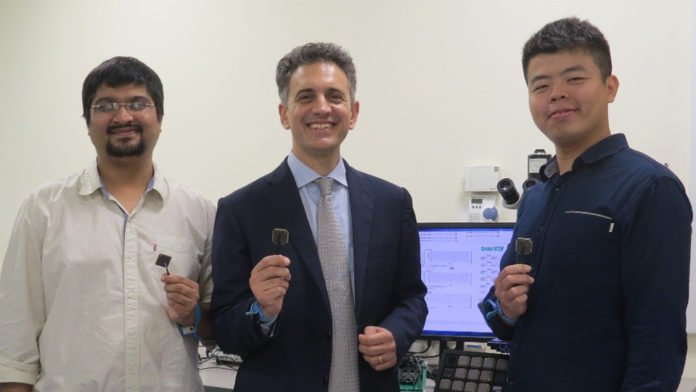Existing IoT devices cannot operate without a battery, and small batteries are fully discharged more frequently. Hence, battery miniaturization often results in highly discontinuous operation of IoT devices, as they stop functioning every time the battery runs out of energy.
In order to address this technological gap, NUS scientists have developed an innovative microchip, named BATLESS. The chip keeps the device activate even when the battery gets fully discharged.
It operates on novel power management technique that allows it to self-start and continue to function under dim light without any battery assistance, using a very small on-chip solar cell. This research breakthrough substantially reduces the size of batteries required to power IoT sensor nodes, making them 10 times smaller and cheaper to produce.
the chip has two different nodes- minimum-energy and minimum-power. When the battery energy is available, the chip runs in a minimum-energy mode to maximize the battery lifetime. However, when the battery is exhausted, the chip switches to the minimum-power mode and operates with a tiny power consumption of about half a nanoWatt – this is about a billion times smaller than the power consumption of a smartphone during a phone call. Power can be provided by a very small on-chip solar cell that is about half a square millimeter in the area, or other forms of energy available from the environment, such as vibration or heat.
The chip’s ability to switch between minimum energy and minimum power mode translates into aggressive miniaturization of batteries from centimeters down to a few millimeters.
The leader of the NUS research team, Associate Professor Massimo Alioto from the Department of Electrical and Computer Engineering at the NUS Faculty of Engineering, said “We have demonstrated that batteries used for IoT devices can be shrunk substantially, as they do not always need to be available to maintain continuous operation. Tackling this fundamental problem is a major advancement towards the ultimate vision of IoT sensor nodes without the use of batteries and will pave the way for a world with a trillion IoT devices.”
“BATLESS is the first example of a new class of chips that are indifferent to battery charge availability. In the minimum-power mode, it uses 1,000 to 100,000 times less power, compared to the best existing microcontrollers designed for fixed minimum-energy operation. At the same time, our 16-bit microcontroller can also operate 100,000 times faster than others that have been recently designed for fixed minimum-power operation. In short, the BATLESS microchip covers a very wide range of possible energy, power, and speed trade-offs, as allowed by the flexibility offered through the two different modes.”
Now, scientists further want to demonstrate a solution that shrinks the battery to millimetres, with the long-term goal of completely eliminating the need for it.
